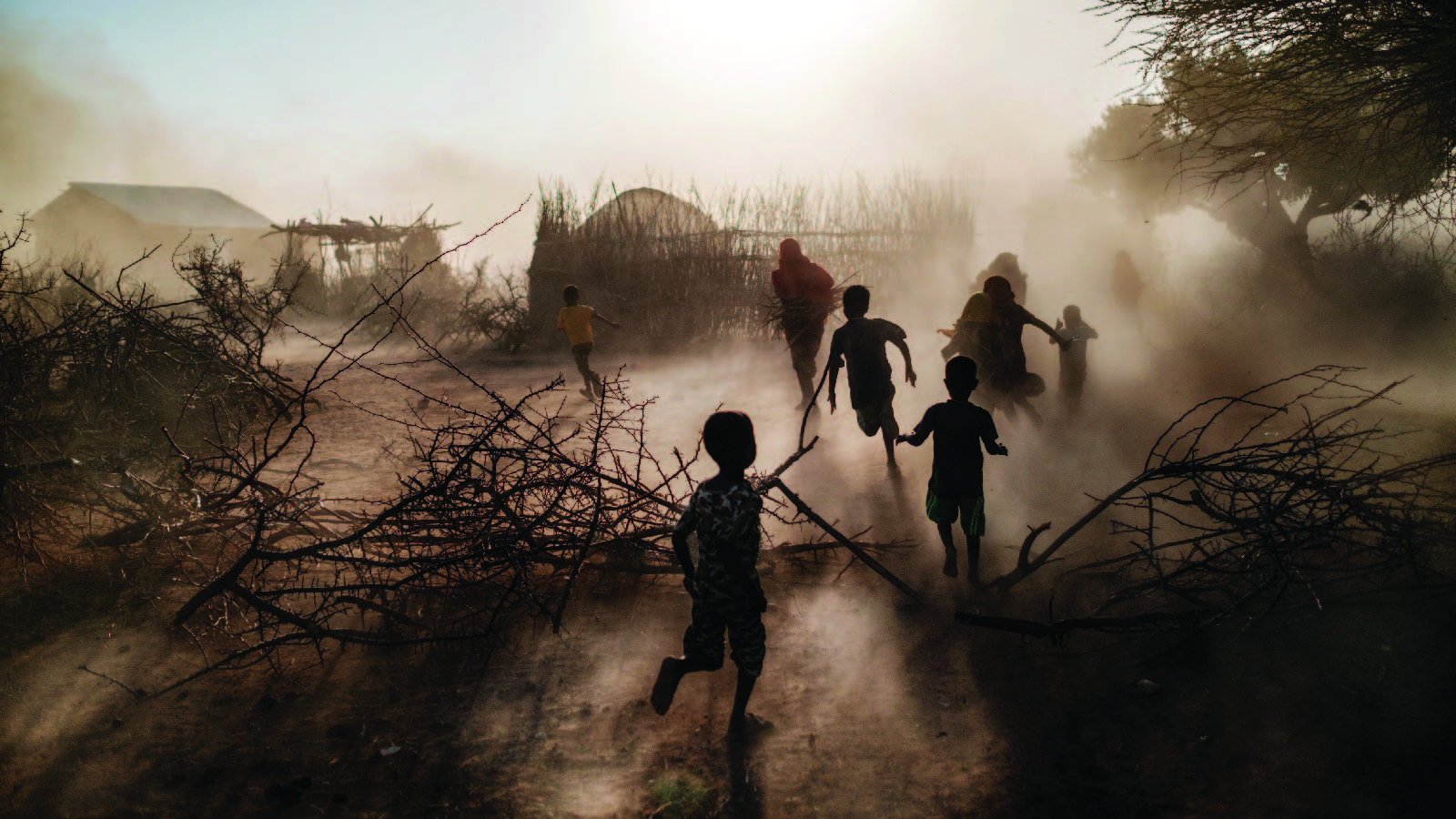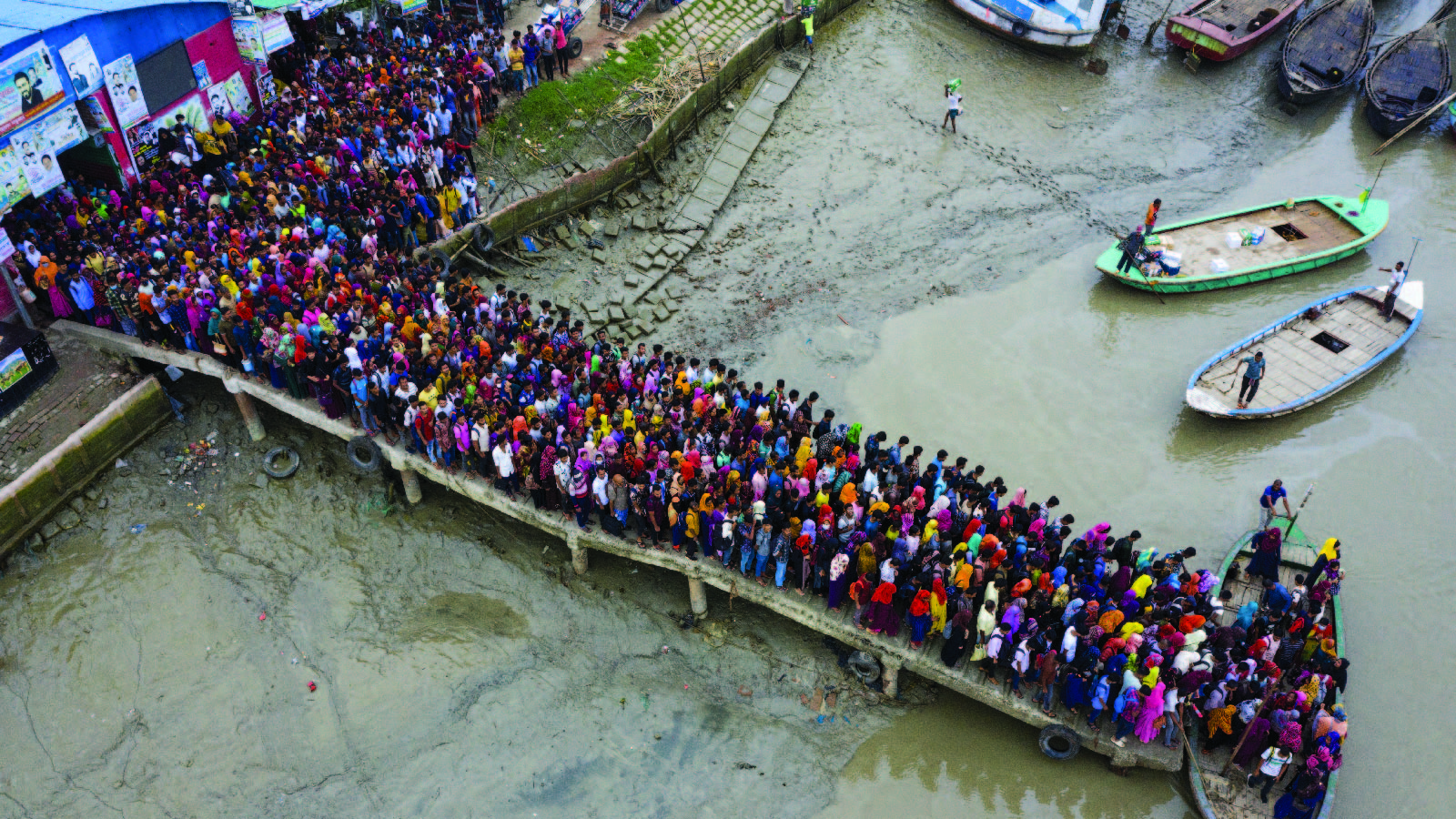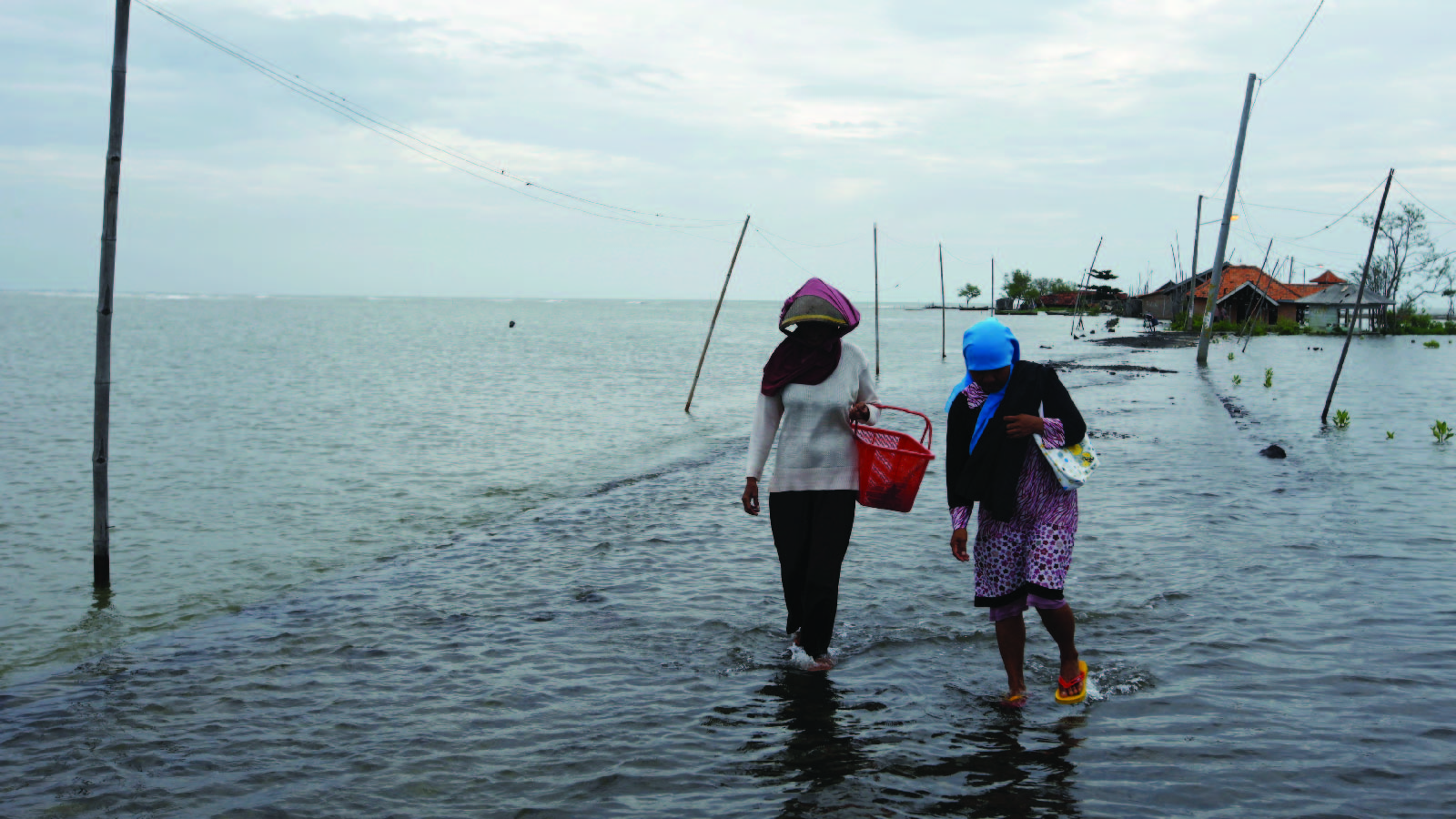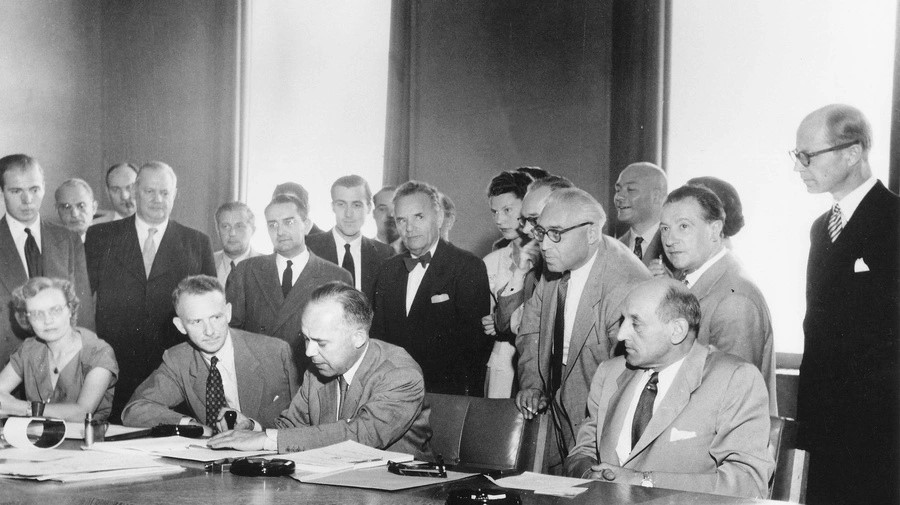Climate Change Threatens to Displace Many People
Extreme weather and climate change effects could drive millions of people to migrate. Government leaders can take steps to address those flows of people and prepare the communities at their destinations.
Climate change doesn’t only alter the ways people live, work, and eat. It can also force them to leave their homes behind.
Human beings have moved around the world for millennia. Those who do are often referred to as migrants. Some are called economic migrants, refugees, or displaced persons, or they take on other labels. But climate change is contributing to new challenges and a new label: “climate migrant.” Without swift work to address the connections between climate and migration, experts warn challenges will become much worse.
Take certain communities in Bangladesh, for example. In the rural village area of Kurigam, people are experiencing devastating floods. Floods have ravaged the community for decades, but they have worsened in intensity and frequency in recent years. Climate change can cause heavier rainfall, which in turn increases the chances of flooding. The rising problem of floods has driven some of Kurigam’s residents to migrate. Many are moving to the capital city of Dhaka, seeking work and securer sources of food. Those people are not alone in their plight. One estimate suggests that South Asia could have forty million internal climate migrants by 2050. A whopping one-third of that number could be in Bangladesh. Its population faces high levels of poverty, and the country is particularly vulnerable to sea-level rise from climate change.
Climate change’s consequences are worse in many less-developed countries with weak infrastructure and ongoing conflict. However, climate drives migration everywhere. In the United States, natural disasters, many worsened by climate change, displaced an estimated 3.2 million adults in 2022. By 2023, more than five hundred thousand of them had not returned to their original homes. So, although climate-related migration hits some countries and regions harder, it knows no borders.
The links between climate and migration are global; they affect us all.
Who is a climate migrant?
One name for people who need to move due to climate change is “environmental migrants,” although the term has many definitions. Unlike other categories and labels used to discuss migration, terms like “climate refugee,” environmental migrant, and climate migrant are still being developed and debated. That is because reasons for migration are often complex and caused by multiple, combining factors. Climate change is therefore a “threat multiplier,” exacerbating existing vulnerabilities and creating new ones that factor into migration.
Currently, most climate-related movement happens within a country (“internal” displacement or migration). But experts predict that cross-border migration, which climate change is already causing, is likely to rise.
Though making estimates can be difficult, according to a 2021 World Bank report, 216 million people could move internally by 2050 due to climate-related changes to water supplies and agricultural livelihoods. In general, experts suggest that climate-related migration and displacement is already significant, and, what’s more, is likely to worsen.
Although all areas of the world face the threat of increased climate-driven migration, certain areas are being hit harder. Currently, Latin America, South Asia, and sub-Saharan Africa are among the regions most vulnerable to the effects of climate change. Cities are also uniquely affected. Migrants, including climate-related migrants, often move to cities to seek jobs and other forms of security (today, 20 percent of migrants live in the world’s twenty largest cities). The influx of people could put extra stress on city services, like supplying water, and could lead to conflicts over land use between the newcomers and older residents. So, cities around the world will be major future settings of fallout from climate-related migration.
How is climate change driving migration?
Climate change can cause people to move for many reasons. Often, multiple motivations combine to drive individuals and families to uproot their lives and leave their homes.
Natural disasters are one significant and growing problem. In 2022, according to the UN High Commissioner for Refugees, “weather-related hazards” displaced almost thirty-two million people. Also, sea-level rise is making it harder and more dangerous to live on small island nations, driving migration from those countries.
In some cases, climate change can contribute to acute conditions (such as floods and wildfires) that cause sudden displacement. In other cases, climate-related conditions that precipitate slower-moving events (like drought and desertification) can cause more gradual migration and displacement.
Wars are also driving people to move, sometimes due to resource scarcity, poverty, or other factors exacerbated by climate. Worldwide, natural disasters lead to more short-term displacement than conflict did.
One Stanford University report found that climate change could have aggravated up to 20 percent of armed conflicts over the last century, driving millions of people to flee. That same report warned that conflict-driven migration and displacement would likely become much worse in the future.
The reasons people relocate are complex. They can involve multiple environmental, social, and economic factors. Climate change acts as a threat multiplier for many of those factors, increasing the stress and danger they pose.
Some of the many pathways by which climate change can cause migration include
- natural disasters linked to some degree with global warming, which displace people;
- war and conflict exacerbated by climate change, which contribute to migration;
- climate-related harms in specific geographical regions, which damage livelihoods and living conditions there; and
- a combination of the factors above.
Policymakers, researchers, and others need to analyze those combining factors deeply to address the motives for migration and the consequences of those population shifts.
What Can Be Done?
The same World Bank study that suggested that climate change could move hundreds of millions of people by 2050 had some more optimistic findings. The researchers found that, if governments invest in climate mitigation and adaptation, they could drop the numbers of internally displaced people by 80 percent (to forty-four million).
So, how does the world meet that goal? Simply paying attention to the connections between climate and migration, researching them, and raising awareness about them is one way to help. Experts have called for stronger recognition, among international development programs and other groups that are addressing global migration, of climate change’s role in displacement.
One area of focus could be offering more protections to climate migrants by improving the international legal architecture surrounding them. Such efforts could convince policymakers to direct more resources to climate-related migration challenges and protective measures. Some advocates would like to see explicit provisions about climate included in the 1951 UN Refugee Convention. It guarantees refugee status for people fleeing persecution based on their race, religion, nationality, membership in a particular social group, or political opinion. But those guarantees currently do not extend explicitly to people fleeing climate disasters.
Other advocates promote crafting additional frameworks. For example, the New York Declaration for Refugees and Migrants [PDF] and the Global Compact for Safe, Orderly, and Regular Migration (GCM) [PDF] represent some preliminary efforts to address the issue. The GCM mentions climate change as a factor that drives migration. It does not, however, provide for any specific legal protections to help those affected.
Also, some policymakers recommend proactive migration [PDF] as an adaptation strategy. That means that “receiving communities” can help leverage the benefits of migration, such as increased labor forces. The approach is controversial, however, because it can mean uprooting people from their homes before they actually need to leave.
Yet, those solutions do not resolve some of the fundamental concerns many people have as to whether they will be able to stay in their homes and lands of origin. Threats to small island nations from sea-level rise sometimes mean that citizens share a national identity but no longer have any form of inhabitable land. Countries such as Tuvalu and Vanuatu, for example, are working to preserve their national identities and cultures. Some of their initiatives include establishing virtual avatars for their citizens online. That way, they can stay connected even if their populations flee to other countries.
Additional work is needed to help stem the tide of climate change and to ensure societies have resilient infrastructure, economies, and livelihoods. Given how connected migration and displacement are to environmental shifts, wider mitigation and adaptation solutions are necessary to ensure people can safely live in their communities.



